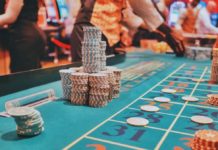
Working conditions in Australia are obviously different from Europe. The main point of interest and concern for future travellers or immigrants to Australia is usually the wages. As you probably know, the cost of living in Australia is quite high, but overall you can earn a better living there. It is important to note that in Australia, there is a national minimum wage, but also minimum wages by sector of activity. Here is everything you need to know about salaries in Australia.
Table of Contents
Minimum wage in Australia
Each sector of work activity is governed by a collective agreement called an “Award”. It is this Award that defines the minimum rate of remuneration, according to the level of qualification in each sector. These pay rates may be higher than the national minimum wage.
If a company is not affiliated with any particular Award, the national minimum wage applies. This is the minimum rate of pay provided by the Fair Work Act 2009 and is reviewed annually. Since July 2023, the national minimum wage has been $23.23 per hour or $882.80 per week (for a 38 hours week). As an indication, the minimum wage in the UK is £10.42 per hour for adults over 23, which works out at about 19.51 AUD, so it’s quite a substantial difference.
Each year, the Fair Work Commission reviews both the national minimum wage and the minimum wage rates under the awards. This is an annual salary review. Most of the changes begin at the end of the Australian tax year, i.e. from July 1 each year.
The role of Fair Work is to help employees and employers maintain healthy relationships in a fair and productive wage environment. It is an independent body. It is there to help you if you are having problems with your employer.
Since April 2022, workers paid by performance are guaranteed a minimum hourly wage. This change applies to full-time, part-time and casual employees. For the horticulture sector, for all full-time and part-time workers, the minimum wage is at least $22.61 per hour.
Generally, according to the Australian Bureau of Statistics, the average weekly salary of an Australian is $1838.10 (2024). The public sector pays better than the private sector. Salary inequalities between men and women also exist in Australia, with an average difference of $200 between the two sexes.
The average salary in Australia
The average Australian salary varies according to the economic activity of the different states. It is in the State of the Australian Capital (ACT) that one earns the best living, and in Tasmania that the wages are the lowest. Here is the average salary per week, for each state as well as at the national level.
Payslips in Australia
Every company, large or small, keeps a register with the payslips of its employees. This ensures that they receive their salaries and associated rights. These payslips can be in electronic form or on paper.
An Australian payslip is quite easy to read and understand. It must include:
- the name of the employer (as well as their company number ABN) and the name of the employee
- the pay period (per week, every 2 weeks or per month)
- the date of pay
- gross and net salary
- if the employee is paid by the hour:
- regular hourly rate
- the number of hours worked at this rate
- the total amount of remuneration, in dollars, at this rate
- increases, allowances, premiums
- deductions from wages: amount and details
- retirement pension contributions (Superannuation): amount and details of the superannuation fund
As an employee, you are entitled to claim your payslip. Your employer is breaking the law if they do not provide a payslip. You must be provided with a copy of your payslip no later than one day after payday, even if you are on leave.
Transfer money to Australia
Save money when transferring money to Australia.
How are wages paid?
In Australia, salary payment can be made in cash, by money order payable to the employee or most often by bank transfer. It is the Award to which the company belongs that defines the payment rules (frequency, minimum rate of remuneration, etc.).
Employees must be paid at least once a month. However, in Australia it is common to receive one’s salary on a weekly or fortnightly basis. Just as it is common for you to have to pay your rent every week.
Know that as an employee you must receive money for your work. You cannot be “paid in kind” (e.g. with food). However, if your employer offers you benefits in kind, this should not replace your salary. It can be a supplement to your financial remuneration.
It is important to note that you must be paid a salary for the time spent:
- Training
- During team meetings
- To open and close the business
- To do trials, especially if you are asked to do more than one.
Allowances and wage increases
In each industry, wage increases and allowances may be granted to you. The rules are defined by the Award to which the company belongs.
On the FairWork website, you can estimate the minimum wage that you should receive in your industry.
For example, if you have an employment contract for a casual job, your hourly rate of pay should be higher compared to a full-time or part-time job. Your wage will be higher to compensate for the fact that your hours are not fixed and that you have no paid holidays.
Beyond that, you will benefit from a wage increase (penalty rate) when you work:
- On the weekend
- Public Holidays
- During overtime
- Late-night shifts
- Early in the morning.
You can also receive allowances (additional payments) if you are an employee who:
- Performs specific tasks or has a certain ability
- Uses their own tools/work materials
- Works under unpleasant or hazardous conditions
This compensation can also include benefits in kind such as:
- Uniforms and special clothing
- Tools and equipment
- Travel and preferential rates
- Company car and phone
- First Aid Course
Freelance compensation
Freelancers, by definition, are independent contractors. They do not receive a salary from an employer because they are their own employer. Instead, they have clients who pay them for a service rendered. Freelancers are usually paid by task or by the time spent on a job.
If we look at the hourly rate of a freelancer, it will be much higher than the hourly rate of an employee for the same job. Indeed, the remuneration of a freelancer corresponds to a gross salary. A freelancer will have to deduct from the sum received by the client, a share for taxes, superannuation, their operating costs (rent, insurance, internet, telephone, computer …), holidays and time spent managing their professional activity (administration etc).
If you want to enter the world of freelancing, you will need to take into account the sum of these costs to calculate the turnover you are aiming for, and thus calculate your hourly rates.
The rates charged by freelancers will depend on the industry. They will be based on the skills, experience, and tasks required. Freelancers may also decide to make a package for their clients, including several services for a global price.
💡 Note:
If you want to work as a freelancer in Australia, you must have an ABN (Australian Business Number) and open a bank account. And just like an employee, you need a TFN for your income tax.
Read more: Freelancing in Australia

Tax system in Australia
In Australia, income taxes are deducted at the source. If you are employed, the wage paid to you will already be taxed. It is your employer who pays taxes on your salary directly to the state. You must provide them with your TFN (Tax File Number). You should request this number from Australian Tax Services (ATO) as soon as you arrive in Australia.
More information: How to get a Tax File Number (TFN) in Australia
Tax rates 2023-2024
In Australia, the tax rate on your wage depends on your tax status and your annual salary bracket. There are 3 main tax brackets:
Tax rates for residents: You will be considered an Australian tax resident when you have your main residence in Australia or live more than 6 months per year in the country at the same address.
| Taxable Salary Class | Tax rate |
|---|---|
| 0 – $18,200 | 0 |
| $18,201 – $45,000 | 19 cents for each $1 over $18,200 |
| $45,001 – $120,000 | $5,092 plus 32.5 cents for each $1 over $45,000 |
| $120,001 – $180,000 | $29,467 plus 37 cents for each $1 over $120,000 |
| $180,001 and over | $51,667 plus 45 cents for each $1 over $180,000 |
Tax rates for foreign residents: If you don’t work enough in Australia to qualify as a tax resident, the tax rate on your Australian wage will be higher than for a tax resident.
| Taxable Salary Class | Tax rate |
|---|---|
| 0 – $120,000 | 32.5 cents for each $1 |
| $120,001 – $180,000 | $39,000 plus 37 cents for each $1 over $120,000 |
| $180,001 and over | $61,200 plus 45 cents for each $1 over $180,000 |
Tax rates for Working Holiday Visa makers: You will have a special tax status. Because of your visa, the Australian administration considers that you do not intend to stay in Australia. Your salary will therefore be taxed more than a tax resident.
| Taxable Salary Class | Tax rate |
|---|---|
| 0 – $45,000 | 15% |
| $45,001 – $120,000 | $6,750 plus 32.5 cents for each $1 over $45,000 |
| $120,001 – $180,000 | $31,125 plus 37 cents for each $1 over $120,000 |
| $180,001 and over | $53,325 plus 45 cents for each $1 over $180,000 |

Read more: Backpackers Tax Rates in Australia
The superannuation pension system
The pension (or “super”) corresponds to an old-age pension. It is a mandatory system to invest at least 11% of your wage (since July 2023) in a fund to meet your retired financial needs. Your employer pays your superannuation into a special account. The superannuation is, therefore, an indirect salary, it is part of your total remuneration and is added to the salary paid to you. The mandatory superannuation share is expected to increase to 12% by 2028.
During a recruitment proposal, your employer may have to indicate that you will receive a wage + superannuation + bonus (if applicable).
You will get back the amount paid into your Superannuation account when you retire, or when you leave the country if you have a temporary visa. Be warned – if you leave Australia, you will be taxed 65% of the amount you withdraw from your Australian superannuation account.

Filing a tax return in Australia
At the end of the financial year (July 1st to June 30th) you have to report your income. This declaration is called a tax return.
Keep all your payslips as you will need them for your tax return. You can get back part of the taxes paid by your employer!
For example, you can reclaim the Medicare Levy if you are not covered by Medicare. In this case, you will need to complete a Medicare Levy Exemption form to be reimbursed for the 2% that you will have paid on the wages received.
You can also claim deductions when filing your return. For example, if you had to undergo training (RSA, White Card), if you had to buy equipment for your work, etc., this could be deducted from your taxes.
Read more: How to claim your taxback in Australia?
Examples of wages in Australia
Backpacker jobs
Most jobs done by backpackers are paid around $25 per hour, plus extra on weekends and holidays. Salaries vary a lot depending on the employer and your contractual and geographical situation. In any case, be sure to check that you are earning the minimum wage for your Award.
Backpacker Jobs and Salaries
What jobs can you get in Australia and for what salary? To give you authentic information, we asked other backpackers.
Qualified jobs
Here are some examples of salary ranges by type of job. Salary varies greatly depending on level of experience as well as geographical location in Australia. If you are looking for work, find out about the salaries offered in the state you are targeting.
| Profession | Salaire annuel moyen |
|---|---|
| Teacher (public/private school) | $95 000 – 110 000 |
| Early childhood teacher | $85 000 |
| Corporate accountant | $115 000 |
| Registered nurse | $85 000 |
| Site engineer | $120 000 |
| Marketing coordinator | $75 000 |
| Graphic designer | $100 000 |
| Web designer | $91 000 |
| Data analyst | $100 000 |
| Business analyst | $122 000 |
| Digital project manager | $135 000 |
| Junior architect | $75 000 |
| Construction project manager | $110 000 |
| Mining engineer | $165 000 |
| Civil engineer | $112 000 |
| Real estate agent | $75 000 |
| Paralegal | $75 000 |
| Personal Banker | $70 000 |
Sources: Hays Salary Guide 2023/2024 and Morgan McKinley Salary Calculator.
Best paid jobs in Australia
In Australia, certain sectors and professions offer particularly high salaries, often reflecting the demand for specialized skills, level of responsibility, or requirements in terms of education and experience. Here is a list of generally the highest paid jobs in Australia, based on data available up to 2023:
- Surgeons and Specialist Physicians: Specialized medical professions, including surgeons, anesthesiologists, and obstetricians, are among the highest paid, reflecting the long years of training and high responsibilities.
- IT Professionals: Information technology specialists, particularly in the fields of cybersecurity, software development, and artificial intelligence, are in high demand and well compensated. Salaries can go up to $200,000 for a manager and $300,000 for a technical director.
- Legal Professionals: The average salary in this sector is $188,000. Of course, this is a broad sector encompassing many professions (paralegal, assistant, lawyer, barrister, etc).
- Engineers: Engineers, especially in the fields of mining, petroleum, chemical, and natural resource engineering, have high salaries, reflecting the complexity of their work and the value they bring to the Australian economy.
- Financial Sector: High-level finance professionals, responsible for a company’s financial management, receive high salaries, given their crucial role in the financial success of the company. Financial dealers (who buy and sell securities on financial markets, advise on trends, etc.), have an average salary of $275,000 in Australia.
- Renewable Energy Professionals: With the focus on transitioning to more sustainable energy sources, renewable energy experts, including engineers and consultants, are increasingly in demand and well paid. Average annual salaries range from $100,000 to $180,000 for engineers, up to $200,000 for managers, and $300,000 for project directors.
- Mining Sector Employees: The average annual income ranges from $110,000 to $160,000 for an engineer, up to $230,000 for a manager. For less skilled jobs, note that positions such as electricians, mechanics, plumbers, tilers, etc., are very well paid in Australia with averages of $90,000 a year.
Sources:




























